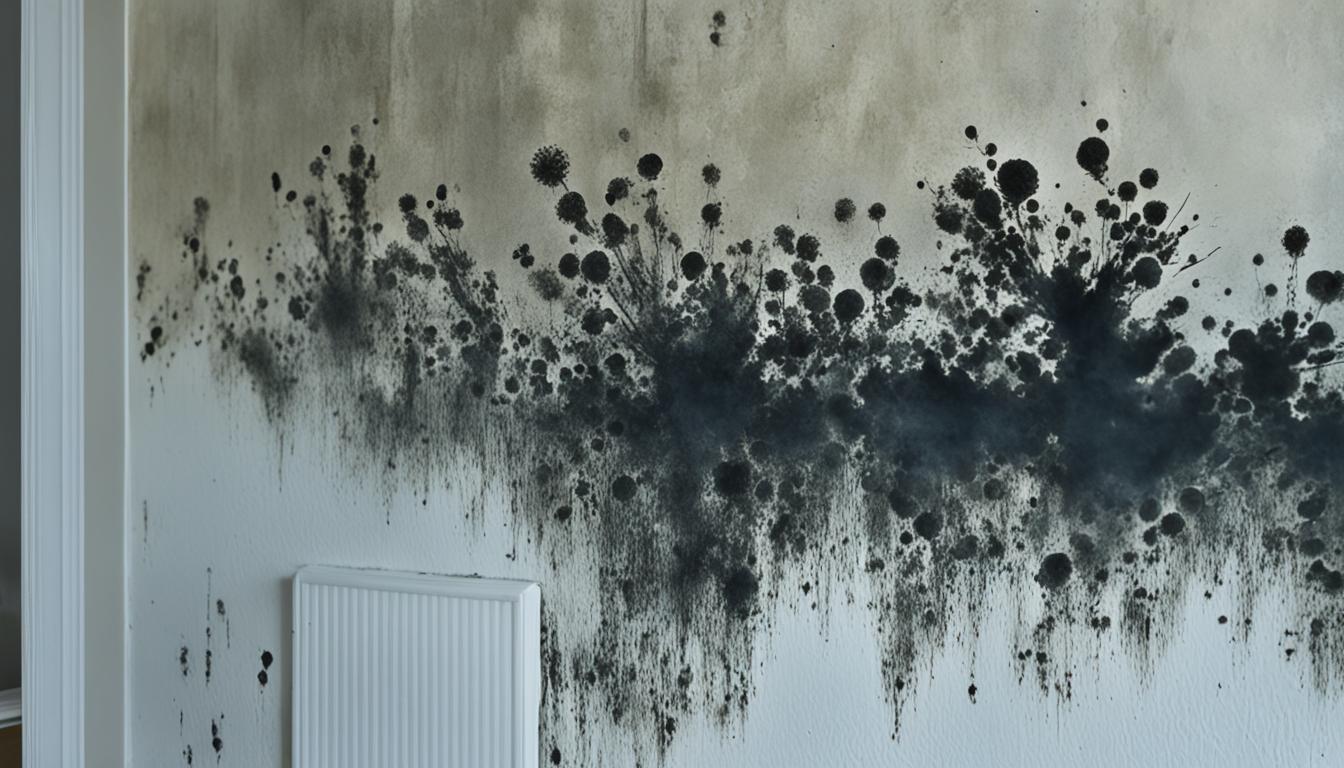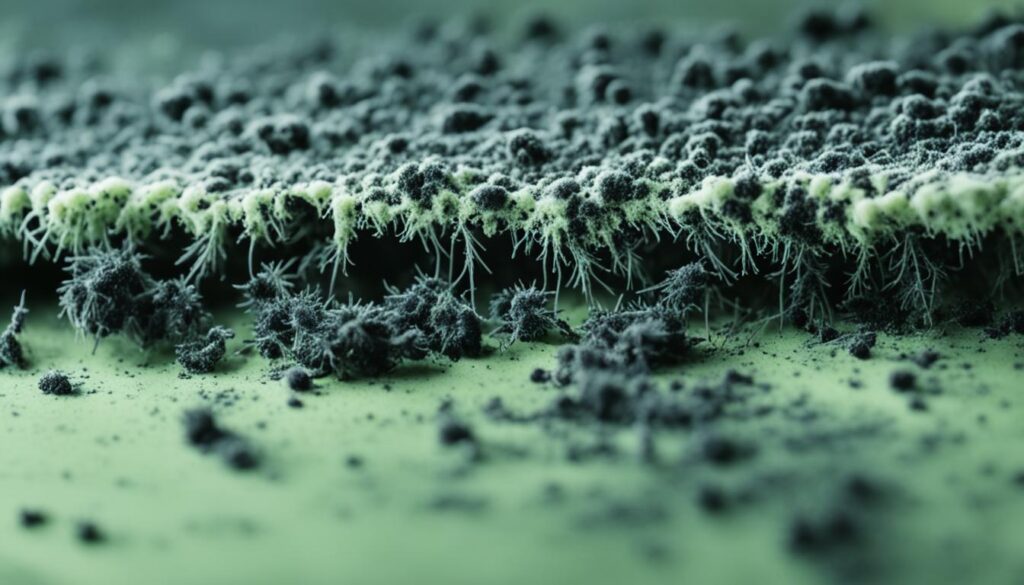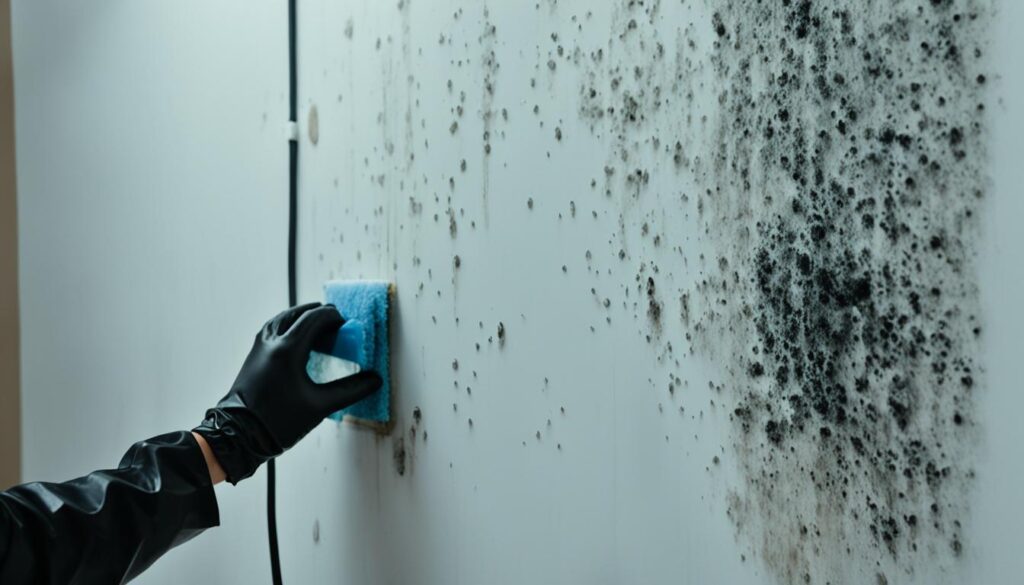
Black Mold in House: Risks and Remediation Tips
Welcome to our comprehensive guide on black mold in houses. In this article, we will address the risks associated with black mold and provide you with essential tips for effective remediation. Black mold can be a serious problem as it poses health risks to occupants and can cause damage to your property if left untreated. It is crucial to understand the dangers and take prompt action for a safe living environment.
Key Takeaways:
- Black mold can pose health risks and cause damage to your home.
- Prompt remediation is essential to address black mold effectively.
- Understanding the health risks associated with black mold is important for the well-being of occupants.
- Identifying the source of moisture is crucial in preventing black mold growth.
- Using appropriate cleaning products and protective gear is necessary for safe and efficient mold removal.
Understanding Black Mold and Its Health Risks
Black mold, scientifically known as Stachybotrys chartarum, is a type of fungus that can thrive in damp and poorly ventilated environments. Its presence in houses can have severe consequences for both the structural integrity of the property and the health of its occupants.
How does black mold form in houses?
Black mold typically grows on surfaces that accumulate moisture, such as walls, ceilings, and carpets. It is often found in areas that have experienced water damage or excessive humidity, such as basements, bathrooms, and kitchens. The combination of moisture and organic materials, such as wood or drywall, provides an ideal breeding ground for black mold.
What are the health risks associated with black mold exposure?
Exposure to black mold can lead to a range of health problems. When black mold spores are inhaled or come into contact with the skin, they can cause allergic reactions, respiratory issues, and other symptoms. Some common signs of black mold exposure include:
- Wheezing and coughing
- Nasal congestion and sinusitis
- Eye irritation and redness
- Skin rashes and itching
- Headaches and dizziness
Individuals with pre-existing respiratory conditions, weakened immune systems, or allergies are particularly susceptible to the health risks posed by black mold.
The importance of addressing black mold promptly
Ignoring the presence of black mold in your house can have serious consequences. The longer black mold is allowed to grow and spread, the greater the risks to both the structure of your home and the health of those living in it. Promptly addressing black mold is crucial to prevent further damage to your property and mitigate potential health risks.

Now that we understand the basics of black mold and its health risks, let’s move on to Section 3, where we will discuss effective remediation strategies for dealing with black mold.
Remediation Strategies for Black Mold
When it comes to black mold, prompt remediation is crucial to safeguarding your home and the health of its occupants. In this section, we will provide practical and safe strategies for effectively removing black mold from your house. By following these remediation tips, you can ensure a thorough cleanup process and minimize the risk of mold recurrence.
Identifying the Source of Moisture

The first step in the remediation process is to identify and eliminate the source of moisture that is causing black mold to thrive. Check for any leaks, water damage, or areas with high humidity. Key areas to inspect include bathrooms, kitchens, basements, and areas near windows or roofs. Fixing these underlying moisture issues is essential to prevent future mold growth.
Using Appropriate Cleaning Products and Protective Gear
When it comes to cleaning black mold, it is important to use the right products and protective gear to ensure effective and safe removal. Choose mold-specific cleaning solutions that are designed to kill and remove mold spores. Personal protective equipment, such as gloves, goggles, and masks, should be worn to minimize exposure to mold and its potential health hazards.
Proper Ventilation and Moisture Control
Preventing black mold from reoccurring requires proper ventilation and moisture control in your home. Ensure that bathrooms, kitchens, and other areas prone to moisture have adequate ventilation, such as exhaust fans. Regularly check and maintain your HVAC system to prevent moisture buildup. Additionally, monitor indoor humidity levels and use dehumidifiers if necessary.
“Effective black mold remediation involves not only thorough cleaning but also addressing the underlying moisture issues. By eliminating the source of moisture and implementing proper ventilation, you can create an environment that is less conducive to mold growth.”
By following these remediation strategies, you can tackle black mold and create a healthier living environment for you and your family. Remember to be thorough in your cleanup efforts and take the necessary precautions to protect yourself during the remediation process.
Conclusion
In conclusion, black mold poses significant risks to both the structural integrity of houses and the health of its occupants. As discussed, black mold can thrive in damp and humid environments, making it crucial for homeowners to address any instances of mold growth promptly. Failure to do so can result in detrimental consequences, including respiratory issues, allergies, and compromised indoor air quality.
By understanding the formation of black mold and its associated health risks, homeowners can take necessary precautions to prevent its growth. Effective remediation strategies, such as identifying and addressing sources of moisture, using appropriate cleaning products, and implementing proper ventilation, are essential in eliminating black mold and preventing its recurrence.
It is important to note that black mold removal requires adequate protective gear and expertise. Homeowners are advised to consult professional mold remediation services to ensure safe and thorough removal. Additionally, maintaining regular inspections and practicing good maintenance habits, such as regular cleaning and addressing moisture issues promptly, can help mitigate the risks of black mold in houses.
By following the tips provided throughout this article, homeowners can take proactive measures to create a safer living environment for themselves and their families. Addressing black mold promptly, practicing good maintenance habits, and seeking professional help when necessary, will not only safeguard the structural integrity of homes but also protect the well-being of its occupants.




